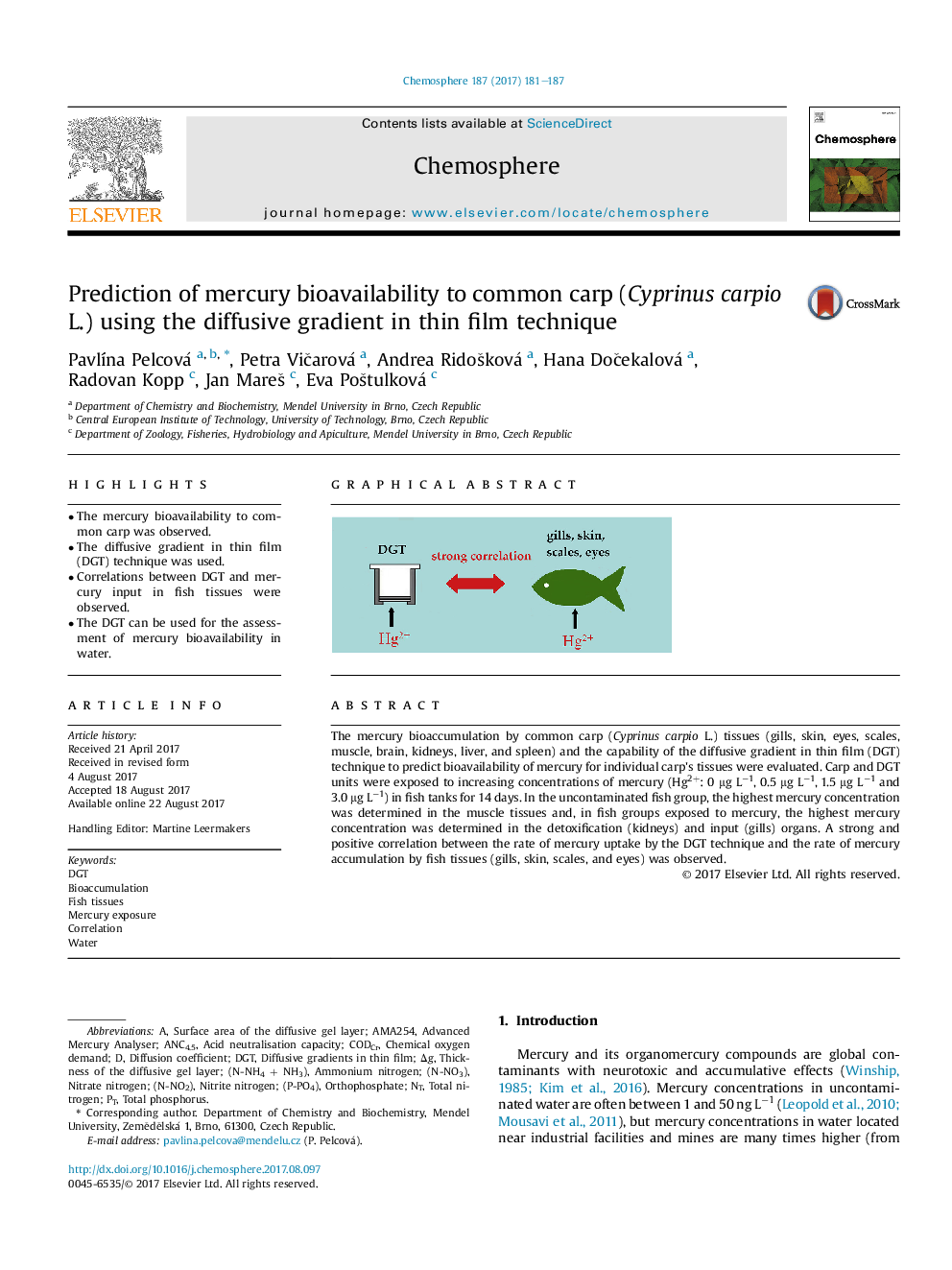| Article ID | Journal | Published Year | Pages | File Type |
|---|---|---|---|---|
| 5746417 | Chemosphere | 2017 | 7 Pages |
â¢The mercury bioavailability to common carp was observed.â¢The diffusive gradient in thin film (DGT) technique was used.â¢Correlations between DGT and mercury input in fish tissues were observed.â¢The DGT can be used for the assessment of mercury bioavailability in water.
The mercury bioaccumulation by common carp (Cyprinus carpio L.) tissues (gills, skin, eyes, scales, muscle, brain, kidneys, liver, and spleen) and the capability of the diffusive gradient in thin film (DGT) technique to predict bioavailability of mercury for individual carp's tissues were evaluated. Carp and DGT units were exposed to increasing concentrations of mercury (Hg2+: 0 μg Lâ1, 0.5 μg Lâ1, 1.5 μg Lâ1 and 3.0 μg Lâ1) in fish tanks for 14 days. In the uncontaminated fish group, the highest mercury concentration was determined in the muscle tissues and, in fish groups exposed to mercury, the highest mercury concentration was determined in the detoxification (kidneys) and input (gills) organs. A strong and positive correlation between the rate of mercury uptake by the DGT technique and the rate of mercury accumulation by fish tissues (gills, skin, scales, and eyes) was observed.
Graphical abstractDownload high-res image (115KB)Download full-size image
